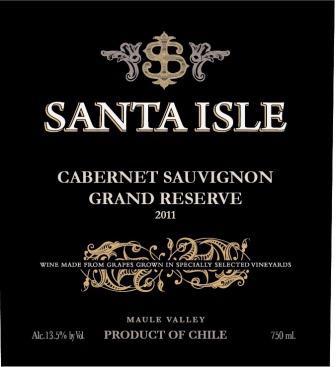2011 Maule Valley Cabernet Sauvignon
The Santa Isle Cabernet Sauvignon Grand Reserve from the 2011 vintage is a captivating red wine that embodies the rich essence of the Maule Valley. This full-bodied wine presents a wonderful balance of luscious fruit intensity, featuring notes of blackcurrant and dark cherry that intertwine seamlessly with hints of cedar and spice. Its acidity is notably bright and refreshing, complementing the prominent flavors while enhancing the overall complexity. The tannins are firm yet approachable, adding structure to the wine and promising excellent aging potential. With its dry character, this Cabernet Sauvignon is an impressive expression of its terroir, showcasing the unique attributes of the Maule Valley while offering a sumptuous drinking experience. Enjoy this exceptional wine on its own or paired with hearty dishes for a truly delightful experience.
The Santa Isle Cabernet Sauvignon Grand Reserve from the 2011 vintage is a captivating red wine that embodies the rich essence of the Maule Valley. This full-bodied wine presents a wonderful balance of luscious fruit intensity, featuring notes of blackcurrant and dark cherry that intertwine seamlessly with hints of cedar and spice. Its acidity is notably bright and refreshing, complementing the prominent flavors while enhancing the overall complexity. The tannins are firm yet approachable, adding structure to the wine and promising excellent aging potential. With its dry character, this Cabernet Sauvignon is an impressive expression of its terroir, showcasing the unique attributes of the Maule Valley while offering a sumptuous drinking experience. Enjoy this exceptional wine on its own or paired with hearty dishes for a truly delightful experience.




